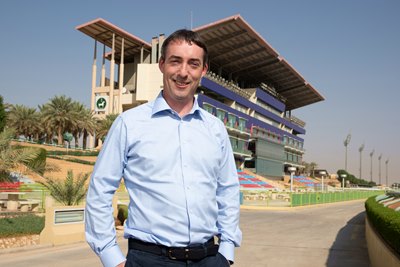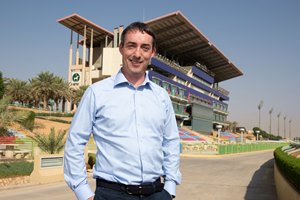In the Rearview Mirror: Saudi Cup Was a Winner


Getting a few days to catch his breath, the Jockey Club of Saudi Arabia's Tom Ryan is getting a chance to do a postmortem on the Saudi Cup program that brought the international racing community to Riyadh Feb. 29.
Building a race meet from scratch takes some doing, but Ryan, who was hired as the director of strategy and international racing less than a year ago, was able to pull it off. As pandemic fears grip pockets of the globe on a seemingly per-hour basis, it is not out of the realm of possibility that the event might have been the last of its kind—at least for this spring.
For example, "Super Saturday" at Meydan in Dubai will go without fans in the stands March 7, which begs the question of participation by some for the March 28 Dubai World Cup program. There is no word yet from San Isidro in Argentina regarding the March 14 Gran Premio Latinoamericano (G1) card.
As for the Saudi Cup, there was heavy lifting involved in putting the logistics in place and drawing more than 60 runners to its turf races and a full field for the grand prize, the nine-furlong Saudi Cup that paid $10 million to the winner.
"We couldn't stand up on a pedestal and say, 'We're going to run the world's richest race' and not do a good job delivering it," Ryan said. "It needed to be significant all-around. The feature race—worth $20 million—you don't have to be a marketing genius to sell that one. But they came for the supporting races also."
Ryan has been on the job since April. He was the general manager for Naas Racecourse in Ireland for 13 years, and for nine years he was the director of Irish Racecourses.
"I got a call one day out of the blue to take a look at (Saudi Arabia)," Ryan said. "Our success at Naas may have put them on the radar. We had completely rebuilt the track and brought it forward quite substantially—brought it right up to being behind the Curragh as far as flat racing goes in the country.
"I was invited to take a look, and I flew out here and met the chairman, had a look at the venue, and got a good sense of what he was trying to achieve and his personal approach to it. It interested me," he said.
"After 13 years in one job, I wasn't necessarily looking to run out with my hair on fire, but I thought the time was right for a new challenge."
And a challenge it was.
"We opened an equine hospital. We laid a turf track from scratch. We delivered huge reforms from the ministry of agriculture, which was helpful for international travel," Ryan said. "We got involved in sales and marketing and promotion of horse racing for the first time ever."
The track at King Abdulaziz Racetrack is based on the Belmont Park footprint, according to Ryan, so they are able to run races up to 10 furlongs around one bend. Inside that track was a 1,800-meter (nine-furlong) sand training track that was converted into a turf course in about four months' time.

"It was an absolute miracle," Ryan said. "We put seed in the ground Nov. 9 and had trials on it in January and ran three races on it successfully on Saturday, and a lot of horses trained on it during the week. It took a lot of traffic considering it was less than four months old.
"From a racing perspective, if you would tell me we were going to get 62 runners from nine different countries in year one on a turf track that hadn't even been built yet—in a country that people don't know a whole lot about—all I can say is it's been a fabulous experience."
Perhaps the most significant aspect of the Saudi Cup was the participation by horses from the United States. Having horses such as Maximum Security, Midnight Bisou, and Mucho Gusto added star power to the main event, and others filled the undercard races. North American interest is key for the event to gather traction.
"We are learning that the viewership figures were very good," Ryan said. "The networks, Fox Sports 1 in the U.S. and the international networks around the world, were very enthusiastic.
"The Americans were very taken with it," Ryan said. "The horsemen had a good time on the course. The quarantine was good, and for the most part, the horses ran well with the exception of one or two.
"I think they'll go home and say, 'It's for real; it makes sense; they are doing a good job.' We're hopeful a lot of people will try to put their names up in lights here next year."
The races appeared to be a hit on track and on television. The Saudi Cup also hit the ground running from a marketing standpoint.

"It was well supported by sponsors, both internationally and domestic," Ryan said. "We had everybody from Longines to BMW to more local Saudi Air and Samba Bank and those type of people. We've been inundated with requests for commercial partnerships next year already.
"The way I look at it—it's five days after, and we have 360 to the next one. We will quickly do the debrief, get our takeaways, and take it from there. There are a few things we'll be looking into: infrastructure, commercial partnerships, catering, broadcasting. We'll take our time and make sure we are in the right place for next year to push it to a new level.
"The Saudis are committed to becoming a significant player in the sport," he concluded. "There is a progressive outlook on this project. We'll be looking hard to find improvements we need to make it substantially better next year."
